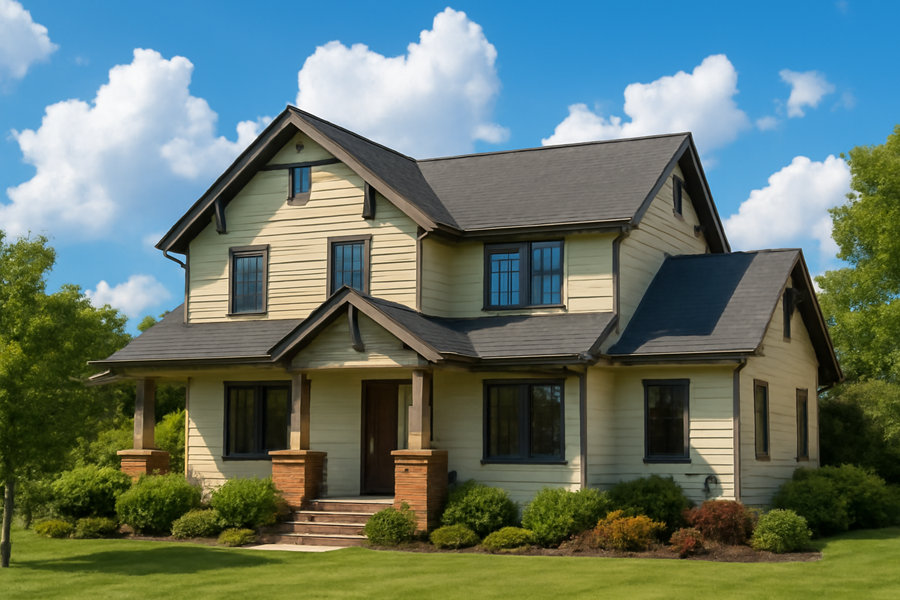As light steel villas gain popularity in the modern construction industry, more people are paying attention to their performance under various conditions. One of the key concerns among homeowners and developers is how these structures handle extreme heat. Can high temperatures compromise the safety, comfort, or durability of a light steel villa? This article explores this topic in depth, analyzing the heat resistance of light steel frame houses and offering a clear understanding of their strengths and limitations.

What Is a Light Steel Villa?
A light steel villa is a residential building constructed using lightweight steel as its structural framework, combined with energy-efficient, soundproof, and insulating materials. Based on a light steel structure, these homes are designed for quick assembly, seismic resistance, environmental sustainability, and long service life. Compared to traditional brick-and-mortar homes, light steel villas have shorter construction cycles, greater design flexibility, and a significantly lower carbon footprint.
With the increasing prevalence of heatwaves and extreme weather due to climate change, questions have arisen about the durability and performance of light steel villas in high-temperature environments—particularly in hot summer climates or tropical regions. Can these homes endure prolonged heat without structural compromise?
Heat Resistance: The Basics of Light Steel Structures
To start, it's essential to understand that the core structure of a light steel villa is composed of galvanized steel frames and other building materials. Steel, the primary structural material, is known for its excellent strength and ductility. While its physical properties may change under high temperatures, steel does not deform or deteriorate easily like wood or masonry materials.
Steel has a high melting point—above 1500°C (2732°F)—which means it remains stable under most naturally occurring high-temperature conditions. Unlike wood-frame houses that are prone to warping, cracking, or even igniting under heat, light steel structures maintain their integrity. From this standpoint, steel villas offer superior structural safety in hot environments.
Insulation and Thermal Resistance
Beyond structural considerations, heat can impact indoor comfort. Fortunately, light steel villas are built with walls, roofs, and flooring systems that incorporate thermal insulation. Common insulation materials used include polyurethane, rock wool, and EPS boards, all of which effectively reduce heat transfer and help stabilize indoor temperatures.
This means that even during extremely hot weather, light steel villas can maintain a relatively cool indoor climate. The insulation systems limit the heat penetration from outside, creating a more comfortable living environment without excessive reliance on air conditioning.
Fire Resistance of Light Steel Villas
High temperatures can also increase fire risks, making fire resistance a crucial performance indicator. Steel itself is non-combustible, but its mechanical strength can degrade when exposed to temperatures exceeding 300°C (572°F). To address this, light steel villas are typically designed with fire-retardant coatings or fire-resistant boards that enhance their fire safety performance.
Additionally, the walls and roofs often use high-temperature-resistant materials like fire-rated gypsum board or glass wool, which effectively prevent the spread of fire. Overall, even though steel can weaken at extreme temperatures, the fire-resistant design of light steel villas provides a strong defense against typical heat-related fire risks.
Long-Term Effects of Heat on Materials
While light steel villas demonstrate excellent short-term heat resistance, long-term exposure to high temperatures can cause some wear and aging. For instance, UV exposure may fade or crack external coatings, and insulation materials may gradually degrade over time.
To maintain structural integrity and appearance, regular inspection and maintenance are necessary. This includes checking wall coatings for cracks or peeling, and evaluating the condition of insulation materials to ensure optimal performance.
Conclusion: Are Light Steel Villas Heat-Resistant?
In summary, light steel villas do not easily suffer damage under high-temperature conditions. Thanks to the steel frame's strength and high melting point, coupled with advanced insulation and fireproofing technologies, these homes offer excellent resilience to heat. That said, routine maintenance remains key to long-term performance.
As a modern, sustainable, and robust housing option, light steel villas are fully capable of withstanding hot climates. Their durability, energy efficiency, and safety make them an ideal choice for contemporary living—especially in areas prone to extreme weather or seasonal heat.
With growing adoption worldwide, more people are recognizing the advantages of light steel construction. Choosing a light steel villa not only meets modern needs for comfort, sustainability, and safety, but also provides lasting peace of mind in both high temperatures and diverse environmental conditions.